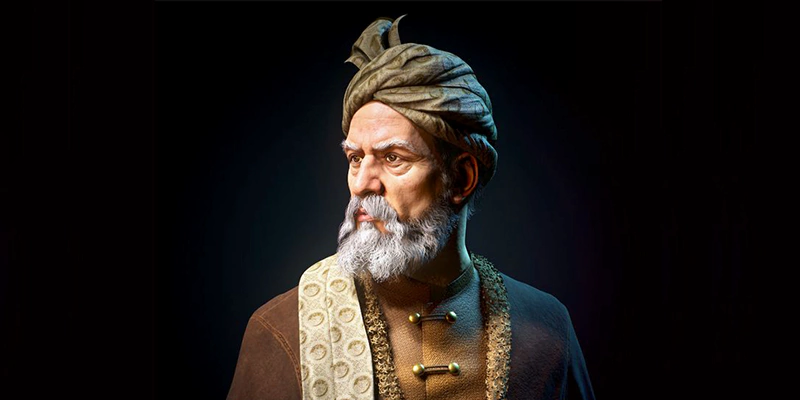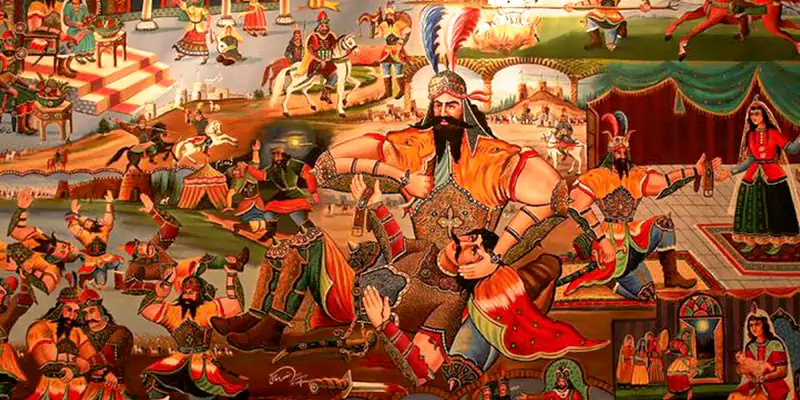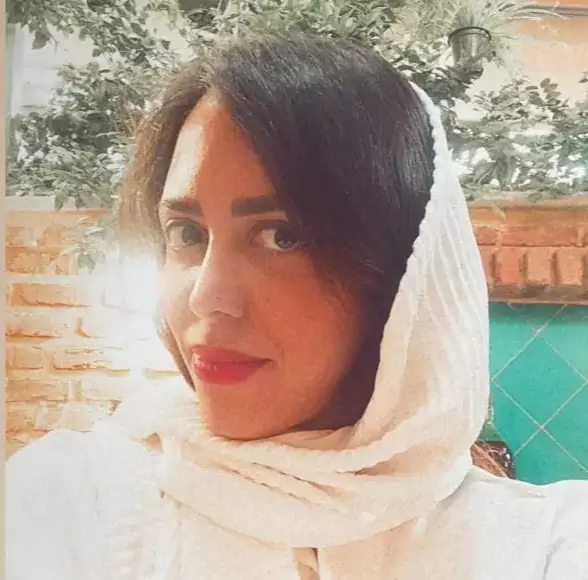- Parisa Adhami
- information
- 607 views
- 0 comments
One of the most influential writers in Persian history and culture was Abul-Qasim Ferdowsi, whose massive work, the Shahnameh (The Book of Kings), is a timeless epic. During a time of Arab impact after the Islamic conquest of Persia, Ferdowsi, frequently referred to as the holy spirit of the Persian language, devoted his life to preserving Persian mythology, history, and cultural identity. Themes of courage, morality, monarchy, and the never-ending conflict between good and evil are prominent in his poetry. The life of Ferdowsi, the setting in which he wrote the Shahnameh, its composition and meaning, and its enduring impact on Persian identity and culture will all be covered in this essay.
Table Of Content

Here, you can find detailed information about "Hafez," a famous Iranian poet, and everything you would like to know about his life.
Ferdowsi's Biography
Ferdowsi was born during a significant political and cultural change in the northeastern Iranian village of Paj, close to Tus. The area saw major changes following the Islamic conquest of Persia in the seventh century. The growth of Zoroastrianism, in which God was Ahura Mazda, caused the fall of the Sassanian Empire, which had dominated Persia for more than 400 years. Persian gradually declined as Arabic emerged as the official language of government and culture.
During a momentous political and cultural shift, Ferdowsi was born in the northeastern Iranian village of Paj, near Tus. The Islamic invasion of Persia in the seventh century causes significant changes to the region. The Sassanian Empire, which had ruled Persia for over 400 years, fell because Zoroastrianism became the official religion. Arabic became the official language and lost popularity. Government and culture, and Persians gradually
Ferdowsi, belonging to the property owners' class, received an education and a great knowledge of Persian history and culture. He used a wealth of pre-Islamic history, mythology, and oral traditions to write the Shahnameh for over thirty years. He aimed to entertain and preserve Iran's historical narratives and keep Arabic from surpassing Persian as the primary language.
Cyrus Crafts; Luxury & Unique Products
Why did Ferdowsi write Shahnameh?
Ferdowsi wrote the Shahnameh for various reasons, including a strong sense of moral obligation, patriotism, and cultural and linguistic preservation. Among these incentives are:
- Protecting Persian Identity: Following the Arab conquest of Persia in the seventh century, the Arabic language and Islamic culture overtook Persian culture, language, and Zoroastrian religion. During this period of cultural change, Ferdowsi worked to preserve Persia's ancient history and customs. He used the Shahnameh to preserve pre-Islamic Iran's myths, legends, and historical accounts, especially about the great Sassanian, Parthian, and other dynasties' kings and heroes.
- The Persian Language's Recovery: At the time, Arabic had become Persia's dominant language of administration, literature, and science, and Persian was in danger of decline. Ferdowsi consciously tried to write the Shahnameh in Persian, which minimized Arabic loanwords, ensuring that the Persian language would survive and continue to develop. His epic played a crucial role in the survival and growth of the Persian language and is often credited with helping shape modern Persian (Farsi).
- Patriotic and Nationalistic Pride: Ferdowsi's strong sense of Iranian pride was his driving force. He published the Shahnameh to praise his country's past and give forthcoming Persian generations a sense of pride. Ferdowsi wanted his readers to feel resilient and united as a nation by telling them tales of great kings and mythical figures like Rostam, Sohrab, and Esfandiyar.
- Philosophical and Moral Aims: The Shahnameh is a deeply intellectual and moral work and an amazing poem that describes conflicts and events. Through the stories of heroes and kings, Ferdowsi reflected on justice, destiny, loyalty, and the impacts of pride and tyranny. The poem observes the duties of the dynasty, the characteristics of effective leadership, and the significance of moral rectitude. Ferdowsi hoped to impart moral lessons through these tales and advise kings and commoners on proper behavior.
- Commissioned Work: Tradition holds that the Samanid kings, who supported Persian literature and culture, hired Ferdowsi to write the Shahnameh. This commission may have initially inspired Ferdowsi, but his work appears to have been primarily motivated by his interest in Persian history and culture. Three decades were spent working on the epic by Ferdowsi. Motivated by his obligation to preserve Persian heritage, he continued writing even after the political landscape changed with the fall of the Samanid dynasty.
- A Personal Legacy: Overall, leaving a lasting impression was another concern for Ferdowsi. Shahnameh's final verses express his wish that his poetry would live on for many generations, guaranteeing his immortality. He believed the Shahnameh was a great accomplishment that would endure beyond his lifetime, preserving his name and Iran's history.

Ferdowsi composed the Shahnameh to preserve Persian identity, history, and language while offering moral instruction. His work was a prideful attempt to prevent foreign influence from destroying Persian culture, and it was productive. As a result, the Shahnameh is considered one of the most important literary works in Persian history.
Ferdowsi’s Literary Style
The purity of Ferdowsi's language in the Shahnameh is notable. Ferdowsi consciously tried to use as few Arabic loanwords as possible in his poetry, in contrast to many other Persian authors of his era. This was a deliberate cultural preservation action. Ferdowsi's decision contributed to improving write in Persian, taking a position in the language's survival and vitality during a period when Arabic had in Islamic literature, science, and government.
His poetic style is characterized by clarity, directness, and grandeur. He uses a simple but majestic form of Persian, making his poetry accessible while maintaining an epic tone, using mythical creatures such as Simurgh. Ferdowsi’s couplets (each two lines forming a self-contained idea) are rhythmic and melodic, contributing to the oral tradition of Persian storytelling. This rhythm, combined with his vivid descriptions and emotional depth, gives the Shahnameh a timeless quality, allowing it to be recited, sung, and remembered for generations.
Ferdowsi's style also reveals a strong sense of Iranian identity. Drawing on Persia's pre-Islamic past, he showcases the persistence of Iranian culture despite foreign dominance and conquest. His work emphasizes the persistence of Persian values, language, and history while bridging Iran's ancient Zoroastrian world with the Islamic present.
Why is the Shahnameh important?
The Shahnameh is extremely important to Persian identity and culture. Following the Islamic conquest, Persian society was going through an Arabization phase when it was written. Many feared that the traditions and customs of Iran, the Persian language, and identity would disappear because Arabic and Islamic cultures were widespread. Ferdowsi responded to this cultural crisis with his art. Ferdowsi contributed to the revival of Persian culture and confirmed its importance in the Islamic world by penning the Shahnameh in Persian and focusing on Iran's pre-Islamic past.
Another important factor in forming Persian identity was the Shahnameh. It established a relationship between the people of Ferdowsi's era and the historical and notable personalities of pre-Islamic Iran, giving them a sense of continuity with the past. This feeling of a common history was crucial to preserving a distinctive Persian identity in an area becoming increasingly incorporated into the larger Islamic world.
In addition, the Shahnameh honors Persian bravery and kingship. Its rulers and heroes are depicted as models of morality, power, and intelligence who personify the principles of Iranian governance. This idealization of Persian kingship has long impacted Persian political culture, shaping how later Persian dynasties, like the Safavids and Qajars, saw themselves and their position as rulers.
Influence of Ferdowsi on Persian Literature
It is hard to overestimate Ferdowsi's impact on Persian literature. The Shahnameh functioned as a template for later poets and established the benchmark for Persian epic poetry. Its themes, characters, and moral lessons have been reinterpreted and modified by countless Persian authors and poets. The Shahnameh is a keystone birth of modern Persian literary culture because Ferdowsi's language, rich in Persian vocabulary and idioms, influenced the Persian.
The Shahnameh's impact is not limited to literature. The epic has served as a rich source of inspiration for Persian wall paintings, manuscripts, and miniature works of art. The tales of the Shahnameh, especially those involving Rostam and other heroes, are frequently depicted in Persian art as representations of the virtues of justice, bravery, and loyalty.
Furthermore, the Shahnameh was vital in preserving Zoroastrian customs and principles. Despite being a Muslim epic, Ferdowsi's epic fully used Zoroastrian mythology and beliefs that predate Islam. Thanks to this blending of Islamic and Zoroastrian elements, Zoroastrian customs were preserved after the Islamic conquest. Zoroastrian communities in Iran and overseas hold the Shahnameh in high regard as an essential part of their ancient culture.
Furthermore, Shahnameh has influenced world literature more widely. Because of its epic coverage, moral complexity, and timeless themes, it has been compared to the writings of Homer, Virgil, and Dante. The Shahnameh has been made available to audiences worldwide through translations into other languages, guaranteeing that Ferdowsi's legacy will continue to motivate authors and readers far beyond Iran's boundaries.
Last Words of Cyruscrafts about Ferdowsi
Beyond his literary achievements, Ferdowsi left behind a lasting legacy. He is frequently credited for helping Persian identity endure during significant political and cultural chaos. By committing his life to the creation of the Shahnameh, Ferdowsi ensured that the history, mythology, and language of pre-Islamic Persia would not be lost. For centuries, Iranians have taken pride in his work, which became a symbol of resistance to cultural assimilation.
Cyruscrafts is a drop-shipping company located in Ontario, Canada. It honors the tradition of Iran, Iranian poets or authors, and other respected people for their efforts and achievements. Cyruscrafts provides a bedrock for people from all over the world to buy and have luxurious products. Our customer service is ready to respond to people.










Comments (0)